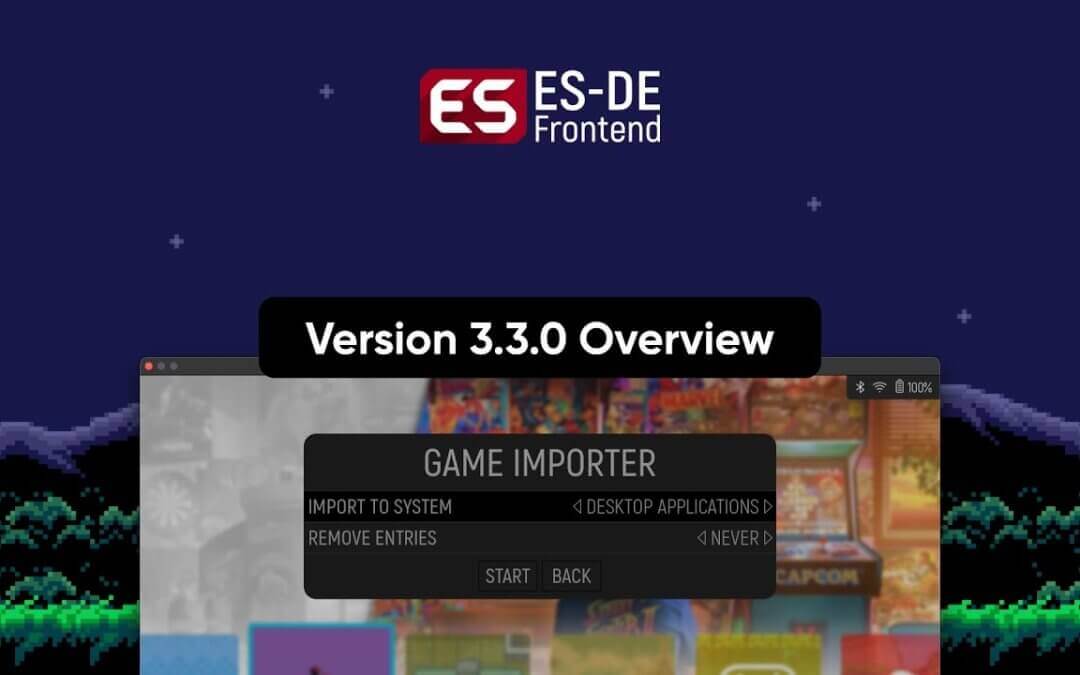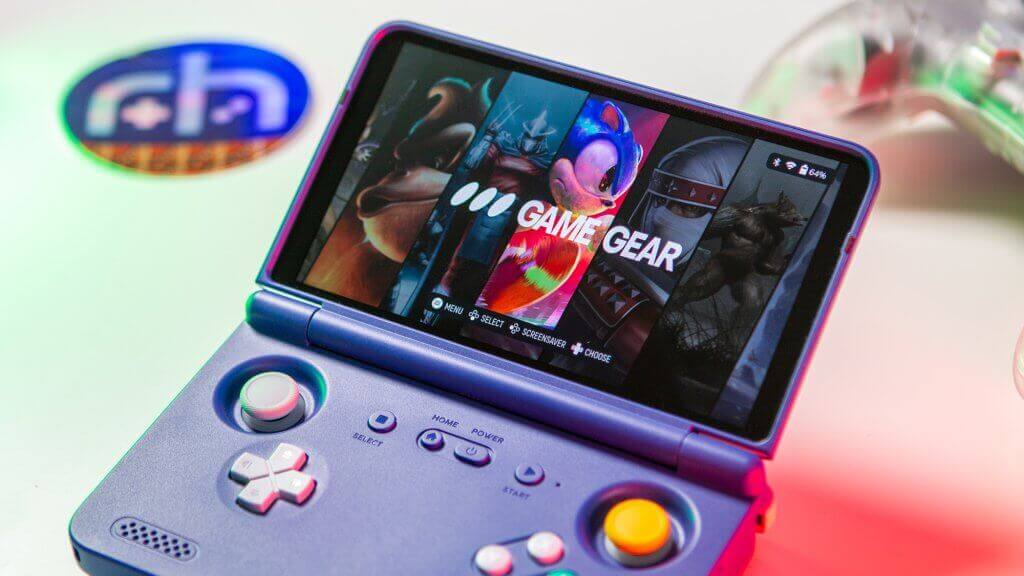EmulationStation Desktop Edition recently released its latest update, sharing version 3.3 with supporters. This latest release has a number of small improvements, as well as one big improvement: the ability to add standalone programs to the front-end.
EmulationStation: A brief history
EmulationStation first launched in, I think, 2014, as part of a Linux distribution designed to make under-the-tv devices into Media Centers. It later became the frontend for the Raspberry Pi’s emulation-focused Operating System, RetroPi.
I first became aware of EmulationStation when I installed the OS, which was then known as 351Elec (now AmberElec), on my Anbernic RG351P, which was the first Retro Handheld that I truly loved. Part of the reason for this was the user experience of EmulationStation and its easy Graphical Interface for easy configuration of settings in RetroArch. It felt leagues ahead of SimpleMenu, which was the best on offer before then.
As of version 3.0, Emulation Station rebranded as “EmulationStation Desktop Edition” and then later as “ES-DE”. Initially only available for Windows and Linux systems, ES-DE launched for Android last year and quickly became the favorite of many people in the scene, including the humble author of this article.
While ES-DE remains free for use on Windows and Linux, use on Android requires a one-off payment of $5, made through Patreon. This payment entitles users to ongoing lifetime updates.
The Big Update: Shortcuts to Standalone Programs
While rival frontends like Dajisho had views that allowed users to open applications like “Settings”, a web browser, or a game streaming app, this functionality was missing from ES-DE before this release. On the Android version of ES-DE, this meant that it was not wise for the Android home button to be linked to ES-DE, since there would be no way to complete required activities like connecting to Wi-Fi or triggering a software upgrade.
When importing an app to ES-DE, the frontend gives the choice of importing as an “App” or importing as a “Game”, with each option being listed as a different option within the main ES-DE frontend. Friend of RH, RetroGameCorps recently made a detailed video about the differences between the two, and how to complete either addition task.
On the PC version of ES-DE, as well as being able to import Desktop Application and “Windows Games” (i.e. standalone games installed directly to the PC, for example from the Microsoft Store), there is an additional option to add Steam Games, essentially importing all games from a Steam Library which are downloaded, enabling these to be triggered directly from ES-DE, in the same way that retro games are launched without going into the Emulator’s menus screen itself.
Other Updates
As well as the new Game Launcher functionality, there have been a few much smaller changes under the hood.
As far as emulation is concerned, the biggest beneficiary is the old Sega Model 3 system, which is now enabled and is able to be launched through the respective versions of MAME.
While less important, the names of some of the various linked emulators have been updated to reflect rebrands, for example, MAME4droid now shows the correct name of “MAME4droid Current” rather than the outdated “MAME4droid 2024”.
Finally, additional language options are now available for Portuguese speakers, as well as Bosnians, Serbians, and Croatians.
ES-DE is available for Desktops and Laptops from its website. Lifetime access to the Android version requires a one-off payment through Patreon, after which download links are sent to the supporters’ inboxes.
What did you think of this article? Let us know in the comments below, and chat with us in our Discord!
This page may contain affiliate links, by purchasing something through a link, Retro Handhelds may earn a small commission on the sale at no additional cost to you.



I might actually go back and try this now. The biggest reason I stayed with Dajisho was just that. I find Emulation station far superior in most all other aspects other than I couldn’t use the android side of my Odin as intuitively.